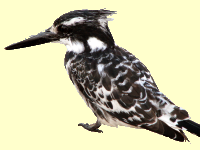Jenman Safaris Review Part Two
by Marden Phelps
(Idaho, USA)

Elephants after a dip
Accommodation
There are many different flowers, bushes and trees and the camp is very well maintained. This was our base for the mokoro rides into the Delta which is one of the most awe-inspiring places I have ever been.
This camp heats the water with solar panels instead of fires. There is an interesting visitor’s center there with a history of the area and some artefacts. The hills themselves are breath-taking. The rocks contain many minerals that give them brilliant vibrant colors and there is a lot of rock art. We saw primitive paintings of rhino, eland, giraffe and many other animals during a two hour hike.
The camp was building a new shower and they rushed it to completion so we would have a place to shower without standing in line. We did but then there was a line for the rest of the evening. There is a “traditional village” near the camp that is worth a visit. They demonstrate many aspects of traditional native life and perform dances and songs.
Food
The food was excellent and while some local dishes were served most were adapted to our tastes.Breakfast varied according to how much time we had before beginning the day’s activities. Cereal, hot chocolate and toast if we were in a hurry. Eggs, pancakes, beans, toast and hot chocolate if more time was available.
Lunch also depended on activities. Sandwiches, fruit, juice and cookies while on game drives and salads with cold cuts and vegetables when there was more time.
Dinner was often rice or pasta with a meat sauce, fresh salads, vegetables and a dessert. We learned that African sweet potatoes are white not orange but taste much like the ones in the States.
Wildlife Highlights
We did not see any big cats. Everything else was on display at one place or another.In Kafue we saw many kinds of antelope. Kudu, waterbuck, impala, puku, bushbuck, steenbok and even oribi. There were crocs and hippos and birds of every kind. Monkeys, baboons, warthogs, hyena (one), mongoose and bush-babies filled in the niches. It was interesting to see the mixture of animals with several species intermixing in a small area.
The game viewing at Mahangu was spectacular. We saw sable and roan antelope at very close range. Kudu, impala, reed buck, bush buck, giraffe, warthogs, baboons, elephants, lechwe and hippos all obliged us with an appearance.
The birds of Africa are amazing. We were astonished at the numbers, colors and variety. Some of them are much like birds we have in Idaho. The fish eagle and many of the herons and cranes are mirror images of our native birds but then there are the bee-eaters, lilac-breasted rollers, wattled lapwing and dozens of others that look like children painted them with the biggest crayon set imaginable. We recorded well over one hundred species that we identified and photographed and we are not even “birders”.
Typical Day
Although we did a lot more driving than most tourists do we had a fairly typical pattern for days we were looking for wildlife. We would get up about 6:00 AM (sunrise was around 6:30) and have a hot chocolate and some toast and jam and set out for a game drive.At about 11:00 AM we would return to camp for lunch, or sometimes have sandwiches under a tree, and nap or write in our journals for a couple of hours. Then out for another game drive until sundown and back to camp for dinner and talk around the campfire.
On travel days we would get up about 6:30 AM and while Chauntel made breakfast we would take down the tents and stow them on the truck. Then we would eat and wash dishes and hit the road. The drives often took several hours but we had great experiences along the way.
We would stop to buy sweet potatoes or watermelon from a road side vendor, slow down, or stop, to let a herd of cattle or goats move off the road, dodge pot-holes that were deep enough to lose our trailer in and laugh at the kids who stood by the road and threw a little sand in the holes then asked for a donation.
Upon arrival at the next camp we would set up tents while Chauntel fixed dinner or lunch if the drive hadn’t taken very long, and then clean up and do whatever we had time for. We usually sat around the camp fire and talked about what we had seen that day or what we hoped to see tomorrow.
Other Activities
We visited Elephant Trails at Livingstone. It is a place where they have trained African Elephants to allow people to ride them out into the bush. It is not really exciting but it is interesting and you get to really learn a lot about elephants and their lives.We also visited a project, in Zimbabwe, called “Lion Encounter” which is working to reintroduce lions into the wild. It is a long term project that plans of breeding lions away from human influence and allowing them to learn to hunt and naturally form prides then they will be introduced into area that used to have lions but don’t anymore. It is a very ambitious program and is funded by donations and tourist dollars.
Our visit to Victoria Falls also merits special mention. It is hard to describe a scene that you really can’t see and that is what I am trying to do. There is so much mist that you can only see small segments of the Falls from any one vantage point and taking pictures involves risking drowning your camera.
However, it is all worth it when you stand at the edge of the gorge and watch the water plunge downward. The roar of falling water, the rainbow arching over the gorge and the almost rain forest vegetation all shrouded in the mists give an almost unearthly feeling.
Disappointments and Highlights
Our only real regret was not seeing any big cats. They were around and others saw them but we just were never in the right place at the right time.The other disappointment was Mudumu NP. There was simply no wildlife there. In a three hour game drive we saw four zebra, two buffalo and an impala. There were no tracks and no sign of game in this area.
Highlights were that the camping gave our trip a feeling that is much different than a lodge safari. Sleeping with the animals may not be for everyone but it was a great experience for us.
The interaction with people was also important. On the trip out of Guma camp we stopped to put air back in the trailer tires (we had to let most of the air out so they wouldn’t sink in the sand) at a village. A group of young boys came out to watch us and soon they were mimicking us and generally putting on a show.
We also enjoyed trading at the markets in Livingstone. When we were ready to come home we went to the market and traded hats, shoes, towels, bandanas, jackets and etc. for curios. It was a very interesting experience and I’m afraid we didn’t come out too well but it was worth it to interact with the people.
Tips & Advice
Do your homework. I read dozens of journals, guidebooks, and travel sites to gather information.African Safari Journals was one of the very best sources I found and that is the reason I am posting this account. I hope it will help someone else as much as I was helped. Begin planning well in advance and pay close attention to the information about clothing and luggage that your tour company provides.
Useful items to take with are a braided stretch clothes line that could be put up anywhere to dry laundry. Our headlamps and a battery operated lantern that we hung in the top of our tent. Binoculars and camera gear are also very important and a journal, if kept, will be a great reminder of experiences that otherwise will soon fade.
FIND A GOOD COMPANY AND FOLLOW THEIR ADVICE! This is one time that cheapest is probably not the best and you don’t want to sit in a plane for that long and not have a good experience between flights. Spend as much time as you can because however long it is it will be too short.
>> Back to Part One
More Chobe Safari Reviews

Comments for Jenman Safaris Review Part Two
|
||
|
||
|
||


